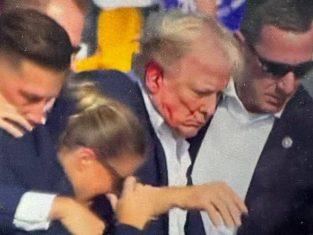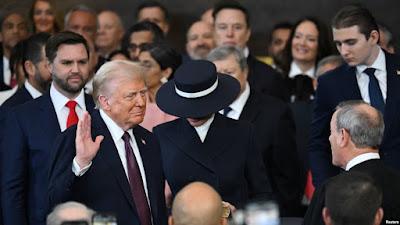On 13th July 2024, during a campaign rally in Butler, Pennsylvania, Donald Trump survived an assassination attempt that left him with a gunshot wound to his right ear. This shocking event not only tested his resolve but also transformed his campaign, marking a pivotal moment that ultimately contributed to his victory at the polls.
Before the incident, Trump’s 2024 campaign faced significant challenges. His critics remained vocal, and many Americans doubted his ability to unite the nation after a polarising term as president. Polls showed a tight race, with Trump struggling to break through to undecided voters.
Everything changed on that fateful 13th July 2024. Trump was addressing a packed rally at the Butler rally when gunfire erupted. A bullet grazed his right ear, leaving a visible wound, and sending the crowd into panic.
The shooter, a 20-year-old named Thomas Matthew Crooks, fired several rounds before being neutralised by Secret Service agents. Tragically, one attendee was killed, and two others sustained injuries.
Despite the chaos and injury, Trump refused to retreat. After receiving immediate medical care, he returned to the stage, determined to address his supporters. His actions sent a powerful message of resilience and strength, captivating not just the crowd but the entire nation.
The assassination attempt dominated headlines for weeks, and Trump’s response became a central talking point. Media outlets that had often been critical of him now focused on his bravery and composure. Images of Trump, wounded but resolute, standing before the crowd, became iconic.
For many Americans, this moment humanised Trump. It showed a leader willing to face danger head-on and reinforced his image as someone who would fight for his supporters, no matter the odds. Undecided voters, and even some sceptics, began to view him more favourably.
Trump’s campaign capitalised on the momentum from the incident. His speeches emphasised personal sacrifice, the fight against forces threatening America, and his unshakeable commitment to the nation’s security.
“This isn’t just about me,” Trump declared at a subsequent rally. “This is about the values we stand for as Americans. No threat can silence us or derail this movement.”
His campaign ads featured clips from the night of the attack, presenting him as a fighter who stood firm in the face of adversity. These efforts resonated deeply with voters, especially in swing states where the race had been neck-and-neck.
The attempted assassination became a turning point in the campaign. Polls in key states such as Pennsylvania, Ohio, and Florida began to shift noticeably in Trump’s favour. For many voters, his actions that night symbolised strength and resilience—qualities they wanted in a leader.
Of course, not everyone was convinced. Some critics accused the campaign of exploiting the incident for political gain, while conspiracy theories about the event’s authenticity began circulating. However, these voices were drowned out by the overwhelming public support Trump garnered after the attack.
When the results of the 8th November 2024 election were announced, Trump’s resilience paid off. He secured a decisive victory, flipping several key battleground states and solidifying his place as a leader who could not only survive adversity but also turn it into strength.
The assassination attempt on 13th July 2024 wasn’t just a moment of crisis—it was the moment that defined Donald Trump’s campaign. His ability to face danger and emerge stronger resonated with voters across the country, shifting the narrative of his candidacy and helping him achieve a historic victory. It was a stark reminder of how moments of adversity can reshape political campaigns, proving that leadership is often measured by how one responds when the stakes are highest.





